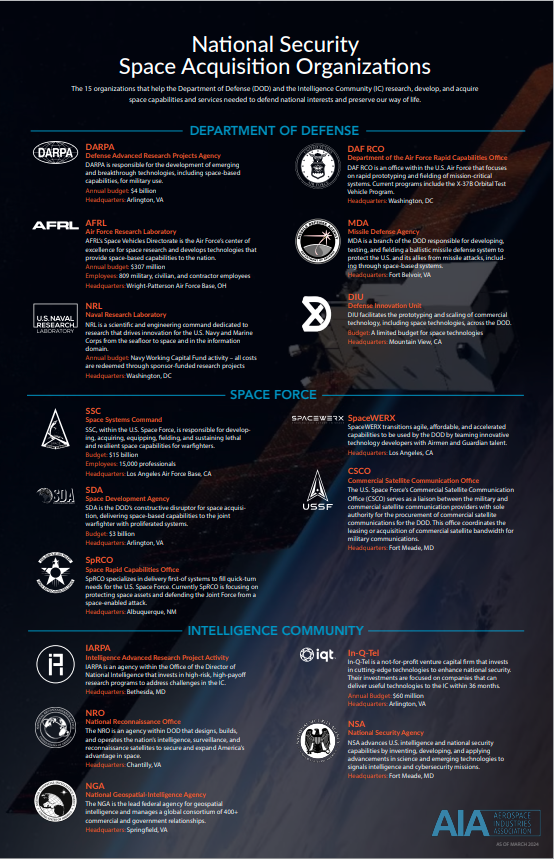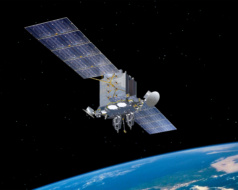The web of offices intended to bring innovative space tech into the national security sector just got a whole lot less confusing.
The Aerospace Industries Association released an infographic this week detailing all the places intended to be touch points between industry and the national security space community. A whopping 15 organizations are available to the DoD and intelligence community to use to research, develop, and acquire space capabilities.
The why, upfront: “There’s been so much change in the national security space community in the last couple years,” Steven Jordan Tomaszewski, AIA’s senior director of national security space, told Payload. “We wanted to take a bit of an inventory here showing the different organizations across the enterprise. This is where the rubber meets the road.”

The audience: The infographic is designed to help three different populations, Jordan Tomaszewski said.
- Congress: AIA often hears from lawmakers who are trying to conduct oversight or set budgets and have questions about the space acquisition system.
- Executive branch: Jordan Tomaszewski said that, amid all of the changes in the national security space enterprise over the past several years, “there’s still a lot of confusion about who is doing what and how it all works together.”
- Industry: The infographic can be a tool for industry to know where they can pitch capabilities across different parts of the government.
Who’s who: The infographic includes more than a dozen offices in the Defense Department, Space Force and intelligence community. While some may be known entities, including Space Systems Command and the Space Development Agency, some may fly more under the radar when it comes to making space investments.
Some examples, according to Jordan Tomaszewski, include those organizations not explicitly focused on space, but who are still making investments in orbit, including DARPA, IARPA, the Air Force Research Lab, and the Naval Research Lab.
A step in the right direction: The government established many of these offices as a way to harness innovation in the commercial sector. And while they’ve made some progress, Jordan Tomaszewski says there’s still a long way to go for the government to be a stellar customer.
“The best thing you can do is pass a budget every year on time,” he said. “We see the impact of CRs. That scares off companies… It’s not going to incentivize them to want to do business with the national security space enterprise.”



